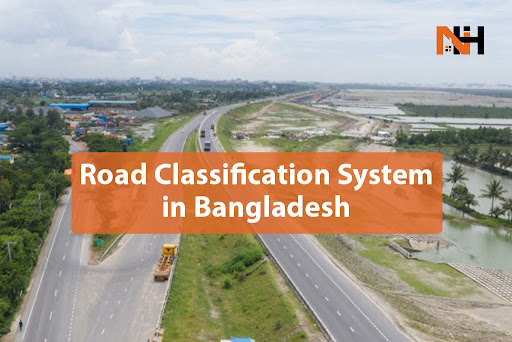
◈ Understanding the Road Classification System in Bangladesh
The road network is a critical component of any country's infrastructure, serving as a lifeline for transportation and economic development. In Bangladesh, a densely populated South Asian nation, the road network plays a pivotal role in connecting people, goods, and services. To manage and maintain this extensive network, Bangladesh has implemented a road classification system that categorizes roads based on their importance, usage, and function. In this article, we will delve into the road classification system in Bangladesh, examining its various categories and the significance of this system in the country's overall development.
Road Classification Hierarchy
1. National
Highways
National Highways are the highest category of roads in Bangladesh. These roads are typically well-paved, have multiple lanes, and are designed for high-speed and long-distance travel. They connect major cities and serve as a backbone for transportation across the country. The numbering system for national highways often begins with "N" followed by a specific number, such as N1 or N2. These highways are the responsibility of the Bangladesh Road Transport Authority (BRTA) and are subject to regular maintenance and upgrades.
2. Regional
Highways
Regional Highways are the next level in the road classification hierarchy. These roads serve as vital connections between districts, and they are essential for both intercity and intracity transportation. Regional Highways are numbered with an "R" followed by a specific number, like R101 or R202. These roads are also maintained and managed by BRTA.
3. District
Roads
District Roads are crucial for the internal connectivity within a district. They connect various upazilas (sub-districts) and serve as the lifelines for local transportation. District Roads are denoted by "D" followed by a specific number, such as D301 or D401. These roads are typically managed by local government authorities or district administrations.
4. Upazila
Roads
Upazila Roads play a significant role in connecting different areas within an upazila, which is the third level of administrative divisions in Bangladesh. These roads are vital for local transportation and economic activities. The naming convention for Upazila Roads includes "U" followed by a number, such as U501 or U601. The maintenance and management of Upazila Roads are typically the responsibility of upazila administrations.
5. Union
Parishad Roads
Union Parishad Roads are the lowest level of the road classification system in Bangladesh. They connect various villages within a union parishad, the smallest administrative unit in the country. These roads are essential for rural connectivity and local development. Union Parishad Roads are named with a "UP" followed by a number, such as UP701 or UP801. The responsibility for maintaining and managing Union Parishad Roads falls on the respective union parishad authorities.
Importance of the Road
Classification System
The road classification system in Bangladesh
serves several critical purposes:
1. Efficient Transportation: By categorizing roads into
different classes, the system helps ensure that the right roads are
appropriately designed and maintained for their intended purpose, whether
for long-haul transport, regional connectivity, or local access.
2. Resource Allocation: The
system aids in the allocation of resources for road construction, repair, and
maintenance. National Highways receive higher funding and attention due to
their strategic importance.
3. Economic Development: A
well-maintained road network contributes to economic growth by facilitating the
movement of goods and people, improving access to markets, and promoting trade
and commerce.
4. Connectivity: The
classification system ensures that even remote areas are connected to the
broader road network, promoting inclusivity and access to services.
Challenges and Future
Development
While Bangladesh has made significant progress
in developing its road network, challenges persist. Some of the major issues
include traffic congestion in urban areas, inadequate road safety measures, and
the vulnerability of roads to natural disasters like flooding and landslides.
To address these challenges, the government is investing in road safety
measures, infrastructure development, and disaster-resilient road construction
techniques.
In conclusion, the road classification system in
Bangladesh is a vital tool for managing and maintaining the extensive road
network of the country. It plays a crucial role in ensuring efficient
transportation, economic development, and connectivity. As Bangladesh continues
to grow and develop, ongoing investments in its road infrastructure will be key
to sustaining progress and improving the lives of its citizens.
For more information on the road classification
system in Bangladesh, you can visit the official Bangladesh Road Transport Authority (BRTA) website.
